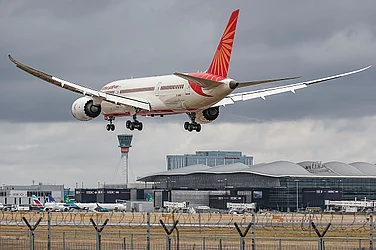The legality and credibility of police encounters in India have been questioned time and time again, especially when it comes to events involving gangsters wanted for years. From Ishrat Jahan encounter in 2004, to Batla House in 2008, to Vikas Dubey, and the latest, where gangster-turned-politician Atiq Ahmad’s son Asad and his accomplice were killed in police firing in Jhansi, encounters have made many headlines in India over the decades.
According to the National Human Rights Council (NHRC) data, as told in the Parliament by the home ministry last year, as many as 655 cases related to death in police encounters have been registered between January 2017 and January 2022. Of these, Chhattisgarh had the highest number at 191 cases, followed by Uttar Pradesh with 117 cases, the data showed.
Meanwhile, in Uttar Pradesh alone, Special Director General of Police (Law and Order) Prashant Kumar told PTI, 183 alleged criminals have been gunned down in encounters between now and the last six years. The UP Police data shared with media showed that more than 10,900 police encounters have taken place since March 2017, when Yogi Adityanath took over as the chief minister of Uttar Pradesh for the first time.
However, critics of the government and opposition parties have often alleged that many of these encounters were "fake" and demanded a high-level probe to bring out the actual facts. The UP government and the police have denied these allegations, and in fact, claimed that law and order had improved since the BJP came to power in the state.
The difference between an encounter and a ‘fake’ encounter
A police encounter refers to the extra-judicial killing of a person or persons, usually in custody, by policemen going beyond the rule of law. It is not a term defined specifically in the Indian Penal Code and the Code of Criminal Procedure but is mentioned under other provisions.
However, in several cases, such extrajudicial killings are staged to look like an encounter. This was seen in the Disha gang rape case where the accused, housed in Chanchalguda Central Jail, were gunned down by the police in a so-called encounter on December 6, 2019.
The Supreme Court had constituted a three-member panel headed by Justice V.S. Sirpurkar to probe the incident. On May 21, 2022, the panel dismissed Telangana Police’s claims of self-defence and recommended charging all 10 police personnel with murder of the four accused in the ‘fake encounter’.
What has Supreme Court said about encounters?
In 2012, during the Om Prakash vs State of Jharkhand case, the Supreme Court held that extra-judicial killings are not legal under the criminal justice administration system of India, and equated them to state-sponsored terrorism.
The top court reserves such measures for the ‘rarest of rare cases,’ calling all other instances ‘cold-blooded murders’.
As per the guidelines of the Supreme Court, an FIR must be registered in case of an encounter death, followed by an independent investigation by either the CID or a team from any other police station.
An inquiry under Section 176 is mandatory in case of such deaths in police firing. The information should also be sent to the NHRC or the state human rights commission.
The top court asserts that there should not be any delay in sending the FIR, diary entries, panchanamas, sketches, etc to the concerned court. Moreover, six-monthly statements should be sent to the NHRC of all cases where deaths occurred in police firing.
The SC also states that compensation should be provided to the dependents of the victim and that no out-of-turn promotion or instant gallantry rewards should be bestowed on the concerned officers soon after the occurrence.
What are the NHRC guidelines?
According to the 1997 guidelines of the commission, the police station-in-charge is supposed to register such deaths in an encounter as soon as they know about it and take immediate steps for a thorough investigation. It must also be reported to the NHRC by the Superintendent or Senior Superintendent of Police of the district within 48 hours of the occurrence.
The NHRC also recommends a probe by an independent investigating agency as the police themselves are involved in the case. It requires the investigation to be completed in a time-framed manner within four months.
A second report must be submitted to the commission within three months providing details of the investigation.


























